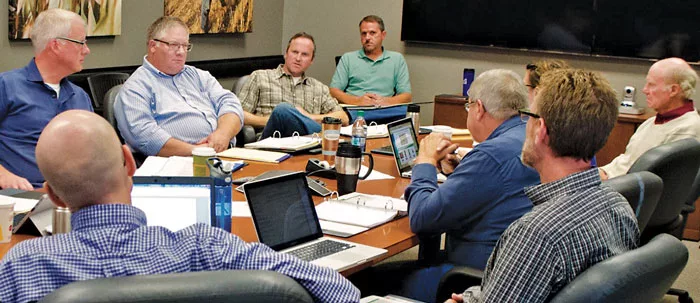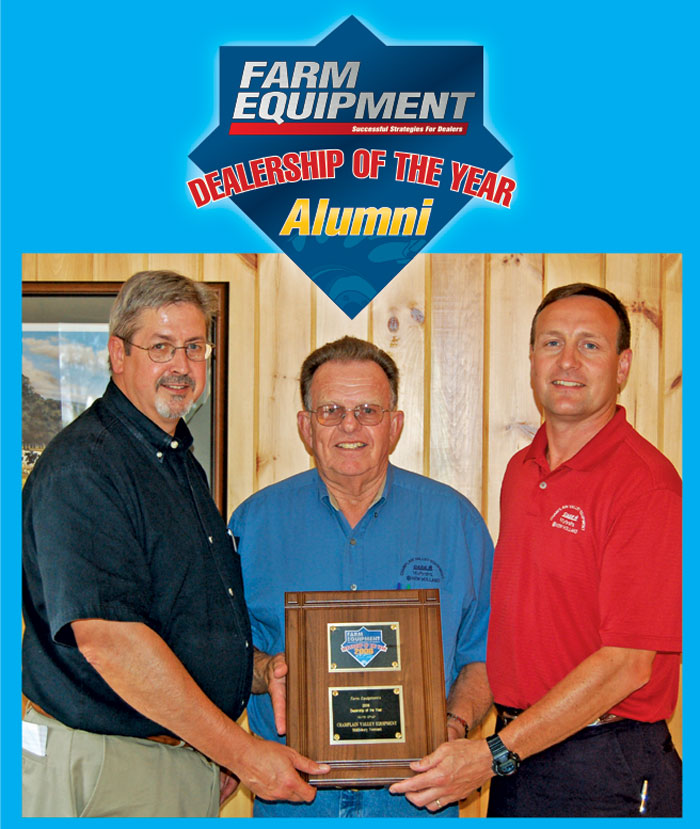We swiftly hired a salesman I’d interviewed from my Red Roof Inn room in the summer of 2004, Tim Geary (a former shortline equipment marketing manager), who accompanied Frank to the Farm Progress Show (my son was born the same week, so I stayed home). I worked on the 2005 media kit from the hospital room, which required lots of positioning changes to reflect our ownership and editorial bent. We also decided to lower the ad page rates since we’d no longer be able to offer the “bolt-on” multi-publication buys that Cygnus and its myriad titles could attract for some customers.
Despite the honeymoon period following our statement-making first issue, the rest of 2004 proved challenging. Despite good content in our October/November edition, it received only meager ad support. I’d learn the impact of how the absence of any real sales effort from April to August was impossible to make up in the near-term. Our debut edition didn't show enough lasting power yet to prove we were worthy of freeing up discretionary dollars at the end of the year.
That fall, we added 2 more full-time staff to a title that was in the red and in a turnaround mode. We hired a managing editor and 24-year-old marketing assistant, Bree Greenawalt, who would step in to collect all advertisements, build the first business system and eventually oversee the circulation. She’d also be instrumental in computerizing the insertion order process, the sales forecasting system and the corporate sales pacing reports that we’d learn put us well ahead of other trade publishers. She’d also oversee the 3 different business system changes and was instrumental in directing our events. Now the senior manager of Data & Ad Services, 2024 will be Greenawalt’s 20th year with the company.
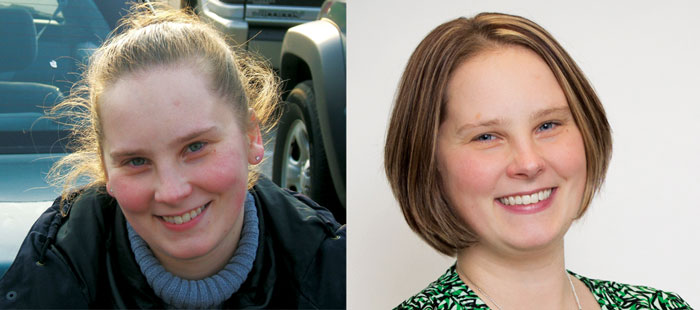
Bree Greenawalt in 2004 (left), and in 2023.
A couple of recollections from those first few months:
Implement & Tractor (I&T). Immediately upon announcing our acquisition of the 3 titles, Frank took a call from the European-based publisher of I&T in Europe. He suggested we consolidate the space and buy I&T at the same time. But we were already cash-strapped, the publisher was seeking a higher price than we’d just paid for 3 titles, and we hadn’t fully understood yet what we’d gotten into. We took a pass, and another several years later. But in 2015, the third time was a charm (see p. 71).
Fax surveys. We had tremendous results in asking dealers for help on surveys and questionnaires, and some of our first in-depth reports — featuring dozens of dealer contributions — were assembled through fax questionnaires.
- A ‘Chewing Out.’ Our receptionist patched through a call from a guy with a thick North Dakota accent who “politely” told me that our first edition of Ag Industry Watch (forerunner of Ag Equipment Intelligence) was lousy, that the industry needed a better effort from us, and that I’d better get my hands on the late Bill Fogarty’s old Rolodex and figure things out. I didn’t yet know who he was, but that was my first phone call with David Meyer of Titan Machinery, which owned just 13 stores at the time.
- Personal Encouragement from Leading Dealer. Shortly after the October/November 2004 edition mailed, I got an email from another dealer-principal who’d become a good friend to me and the entire staff. It was a thoughtful letter validating the path that we were on and had established a few months earlier. We were confident in our approach, but the results were yet to be seen, and this correspondence was important for numerous reasons, including inside and outside our own offices. His name? Leo Johnson of Johnson Tractor in Janesville, Wis.
- FEMA-FEWA Convention. The Fall Farm Equipment Manufacturers Assn. (FEMA) and Farm Equipment Wholesalers Assn. (now known as EMDA) Convention was in Orlando in the Fall of 2004. It was there that I first met Bob Schnell and Vernon Schmidt of FEMA, Charlie Glass (who’d become a contributor of ours) and many other executives that would become professional and personal friends. I’d also elbowed my way into a New Member Reception and then the spirited Dealer Relations Committee (that they weren’t sure they liked the media present for). I left the meeting with a test assignment that would lead to 9 years serving on FEMA’s Supplier Board of Governors and a 3-year stint on the main FEMA Board.
- First Dust Up with Jim Rank. Longtime Farm Equipment Salesman Jim Rank was a reluctant participant with most changes, but grew warmer after seeing the content quality of the first edition. But man, was he ticked off by our plans to add feature content to his “babies” in the Farm Equipment SHOWCASE and the annual Farm Catalog. He wanted them to remain the product-only coverage he’d built both up to be, and he thought we were going to forever break his toy. He was as persistent with me as he was with his shortline customers, but we held firm that an editorial-first company was going to make editorial-first product issues, too. Again, he warmed up after seeing the final product.
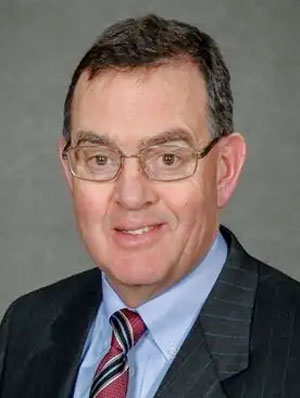
David Meyer, Titan Machinery
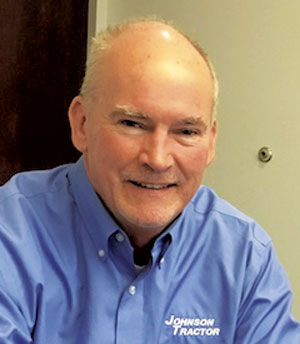
Leo Johnson, Johnson Tractor
June 2005 was the Turning Point
The first of the year issues saw content strides but the revenue was still under-performing. The staff was totally new to the market, we were undergoing company growing pains (including navigating a new approach to management and relocating office buildings in the week before our two national events) and things were clunky, to say the least. Jim Rank (who was working part-time for us) was still bringing in the majority of the business.
Fateful Day
My former boss and colleague in Chicago, Dave Kanicki, who was finishing up his work at an industrial furnace supplier, was coming up to Wisconsin for a scheduled lunch date to catch up and see the new offices. I’d worked for Kanicki for 8 years on the trade magazines published by the American Foundry Society.
He had started the turn-around efforts of Modern Casting and was told by the association board of directors to save it or shut it down. Reflecting on our days together from 1992-2000, he said “our goal was to become the No. 1 publication and, together, we did it.” Working with Kanicki and another good friend and colleague in the late Rolf Petersen, we refocused the struggling magazine and took a commanding market share lead in a short period of time — and stole it from a much larger competitor in Penton Media.
While Kanicki was in our office, the managing editor, who was on a performance improvement plan, handed me his resignation letter while Kanicki was in my dad’s office. When Kanicki returned I asked if he felt like flexing his writing muscles again on a freelance assignment. He surprised me with an “OK,” and before he left he had a freelance assignment to find dealers’ best practices and tips in selling skid-steers.
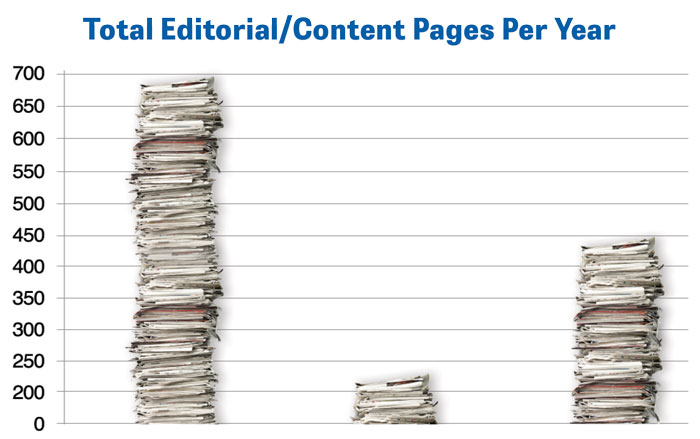
Before acquiring Implement & Tractor (I&T) in 2015, Farm Equipment had recorded a 69% advertising market share vs. Equipment Dealer's 22.6% and I&T's 8.4%. In addition to the commanding lead on advertising market share, Farm Equipment's total article pages devoted to dealer content dwarfed both I&T and Equipment Dealer, shown at middle and right, respectively. — Information courtesy of Inquiry Management Systems Ltd. (IMS)(July 2012 — June 2013)
Over the next couple of weeks, we both started thinking about whether we could capture lightning in a bottle for a second time as we’d done in the 1990s in Chicago.
The Spring Farm Equipment Manufacturers Assn. (FEMA) was coming up, and I suggested that Kanicki join me if he wanted to see what this world was all about. It turned out to be an aggressive trip. Our plane arrived in Phoenix at 11 p.m. and we drove 3 hours to Yuma so we could be at Booth Machinery the following morning. We also visited RDO Equipment and went on a sales call. Kanicki got to size up the industry, and the people he met were also meeting Kanicki, though they may not have understood what he was doing there. By the meeting's end, he already had a good rapport going with the smokers.
By the end of the trip, we both wanted to make this happen, and so the flight and his “hefty” meal expenses (the room was shared) certainly ROI’d. For years, we went to the FEMA meetings together, and we had some great friendships, including a standing dinner date with the late Ward McConnell and his wife, Linda, of Art’s Way Manufacturing. Our company wasn’t well-known outside of the handful of no-till equipment suppliers there, but it was soon clear that a lot of the FEMA people wanted us to succeed. They knew the dealers needed a voice as did the shortline manufacturers. The FEMA group was instrumental to us getting our arms around what this business was all about.
Kanicki recalls “We shared a room, and Mike didn't like sharing a room with me. Upon hiring me, he set a goal to make the magazine profitable enough to afford our own rooms.”
Changing Roles
Shortly after Kanicki started in April 2005, salesman Tim Geary had a series of heart attacks. With Geary unable to work, and Kanicki on board to look after the content, I had to step into a direct sales role for the first time in my career to supplement Rank’s part-time duty. I was a willing pupil with the clock ticking on me, and Rank was my teacher. Thought to be a dinosaur of the business at Cygnus, he no longer had a receptive audience to teach his skills, and in fact his faxed proposals, call cards and forecasts and data that tracked every dollar he ever booked were scoffed at.
Rank was a great teacher, and I was asking for his help. He was refreshed by mentoring someone who wasn’t dismissive of his old-school tactics. I’ve attended a lot of sales training meetings over the last 30 years and learned from them all, but Rank was my sales mentor, and I found how to adapt what he accomplished to my style.
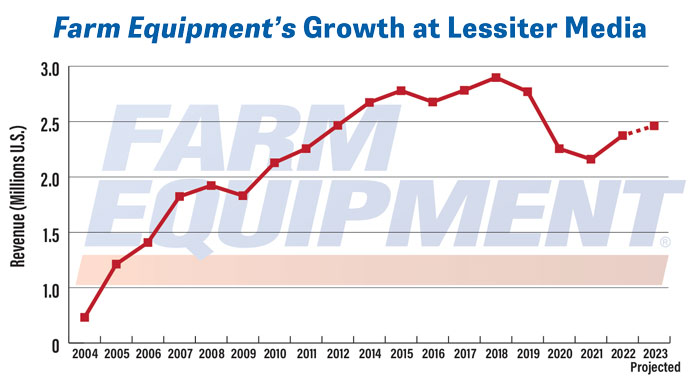
Farm Equipment’s total income 2004-2023
Things forever changed with the first edition to bear Kanicki’s name on the masthead. Our first-ever June SHOWCASE (the same issue that was skipped the previous year) was a monster success. The “Company Profile” concept was launched to introduce manufacturers and other suppliers to dealers in a fresh, editorial way and Kanicki wrote all 23 of them.
That one issue alone brought in close to one-third of the prior year’s revenue. Our office manager baked a “Congratulations Farm Equipment” cake that caused Rank to drive from Fort Atkinson to photograph and share his sentiments with the whole company (most of whom he’d met for the first time) on what had just been accomplished.
I remember my dad trying to manage my expectations that the success following that SHOWCASE issue might not continue. But with our Dealership of the Year (DOY) edition up next, we learned that it would. After 9 months, the magazine went into the black with that June SHOWCASE edition, and stayed there.
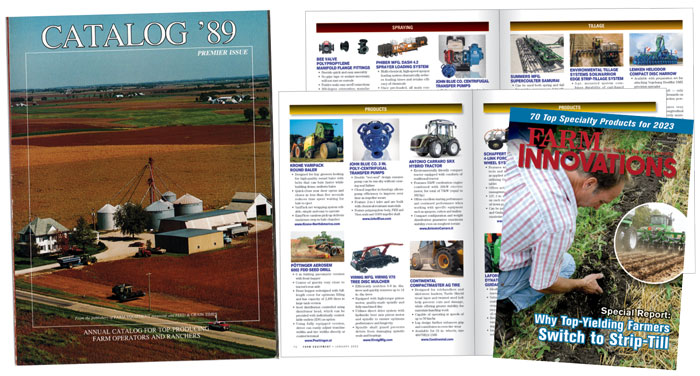
The Farm Catalog was launched 1989 by Johnson Hill Press to connect the innovative shortline equipment manufacturers to a large audience of high-income, high-acreage farmers. It provided manufacturers with a low-cost way to add a farmer-facing message to the mix and to garner time-sensitive leads for new dealer prospects. Lessiter Media immediately added feature content to the magazine, and in January 2019 rebranded the title as Farm Innovations for Today’s Top Farm Operator.
“We took Farm Equipment from the graveyard, brought it back to life and made it No. 1,” reflects Kanicki. “It always seemed like we had a mission, and that's where I always felt I was best, when there was a mission, a goal to achieve.
“In both our cases and things that you and I have worked on together over the years, we delivered on that mission work. We took publications that weren't doing well, turned them around and made them profitable and valuable to our readers. That was our basis of the whole thing — that if we could deliver value to the readers first, then the advertising comes.”
Dealership of the Year Award
We knew the best way to get dealer benchmarking and sharing was to write about the very best of the best. We immediately noticed there wasn't any national award recognizing the industry’s best. Within a month of acquiring the magazine, we put the DOY on the media kit for 2005, committing ourselves to it.
“We solicited nominations from dealers and farmers, compiled the information and set up an independent panel of industry experts who selected the DOY,” recalls Kanicki. “It was a process because we were defining what we thought the criterion should be, and the panel of judges helped us redefine it further. We learned a lot just by going through that process to understand what set the best dealers apart from the pack. That panel was a very important part of our accelerated learning process.”
Following the judges’ selection, Kanicki headed to Jamestown Implement in Jamestown, N.D. (now known as Valley Plains Equipment within the Brandt group of stores). “The GM’s name was Roger Nelson, and I learned more from him in 2 hours than I had learned about the industry up to that point. He said that when he took over the dealership, the staff was pinching every penny, and every time a customer wanted something beyond the normal, they would say, ‘No, it’ll cost too much.’ Roger said he had to teach them that you can't be successful and profitable simply by saving money. That always stuck with me, that if you want to be profitable, you've got to invest in the customer.”
Meanwhile, I took the assignment to visit the Fred Haar Co. in Freeman, S.D. (now known as C&B Operations). Armed with my camera gear and notebooks, I was excited about this trip and the cover story that would put us and the DOY on the map. But I found yet another endurance and stress test.
Farm Equipment Dealership of the Year Program
Since 2005, 36 dealerships across the U.S. and Canada have been determined by an independent panel of judges to be the “industry’s best.” Lessiter Publications editors launched the program immediately upon acquiring the magazine in 2004 to “elevate farm equipment dealerships that are leading in best practices, operations management and customer care.”
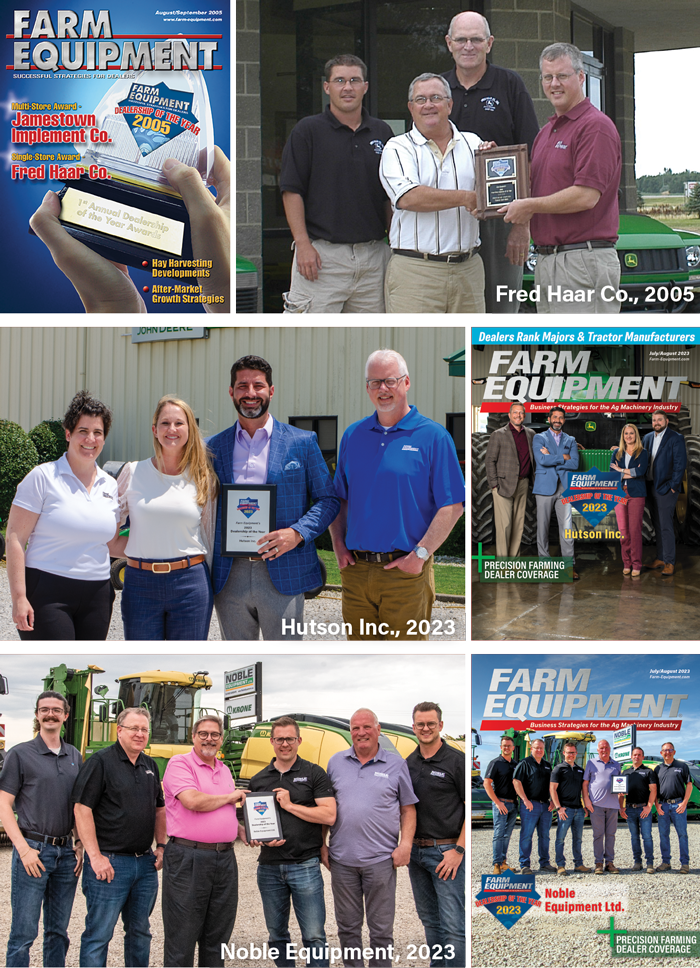
I drove down to O'Hare to fly out, and of course there were 3 flight delays from O’Hare to Sioux Falls, S.D. I had to stay the night in Chicago only to face the same delays the following morning. While still on the ground, I learned the Haars were leaving the country the next day and would be out for 2.5 weeks, which was well beyond our tight printer deadlines. They said, ‘You're going to have to get us today if you want to do this.’
I did get to Sioux Falls in the late afternoon, picked up my rental and violated the speed limit for 50 miles because I’d only get 90 minutes to do what I had planned for a day and a half. Yet again, the absence of time forced focus, and I got the most vital questions answered, and sprinted with my camera. It wasn’t the best article I’d ever written, but it came together, and we learned something about ourselves, and our dealers, in times like this. While in town, I made a couple of sales calls, including my first visit to Raven.
The DOY soon surpassed our own expectations. There’d be national and local news coverage, requests for us to formally present the award in front of all employees in showroom meetings and meal functions, and orders for another 30-plus plaques so they could be hung in each store location. Some groups even made their own videos and DOY t-shirts for their entire staff.
A Memorable DOY Visit
Executive Editor Kim Schmidt agrees on how the Dealership of the Year (DOY) assignment can tell you something about your subject’s DNA. While she and Ben Thorpe were on their way to Sydenstricker Nobbe Partners (SNP) for the 2021 DOY presentation and a separate “Day in the Cab” visit, their rental car rear windshield was smashed by thieves, at a time when rental cars were still in dire shortages after COVID. “We were supposed to be doing the interviews, but SNP went above and beyond. They were driving me all over the place to try to get a new car and, it was good that we did since it poured on the drive home. We got the interview and filming done, and it was a really good story and all of that, but talk about unnecessary stress.
“It taught me a lot about SNP’s orientation toward helping others and what they did for me in contrast to the poor customer service of the rental car company.”
After the first year, we attracted the participation of industry leading dealers like Titan Machinery and RDO Equipment. While not all dealers are willing to provide the detailed revenue and performance metrics required to advance their nominations, many wanted to share what they were doing.
Today it culminates further beyond an article and video series via the DOY Alumni Group, a community of past recipients. “We reach out to the DOY Alumni for all sorts of things: for feedback on people to nominate, for feedback on coverage we're doing and for what dealers most need to hear about at the Dealership Minds Summit,” says Kim Schmidt, Farm Equipment executive editor. “This group has become a go-to resource for us and validates ideas and sources.” It’s even been suggested that Farm Equipment host a special event for the 36 award-winning dealers.
Schmidt adds that the Dealership Minds Summit now includes a DOY panel “where we're opening up the room so dealers can pick top dealers’ brains and ask specific questions on their successes or failures.”
She concludes that the DOY assignments are the most fun and most educational. “This program also exposes our staff to the best of the best, and we see far more than what makes its way into the articles. We’d know their performance metrics and why they were chosen ahead of time, but the onsite interviews share how everything comes together and how they made it happen. Each assignment spurs us to examine what we should be looking at with the next dealership we enter.”
We had some great experiences on those trips. That's where I got to know Ron Birkey, Mark Foster and Mike Hedge at Birkey’s Farm Store, David Meyer and Peter Christensen from Titan Machinery (when they were “small-time dealers” with only 29 stores), Ron Offutt and Keith Kreps at RDO Equipment and too many others who helped us along the way. And these meetings brought along long-term friendships too, such as Meyer inviting us to the Titan pheasant hunts and to ring the bell with them on NASDAQ in New York City. And the trash-talking sports texts with several DOY recipients also keeps our wits sharp.
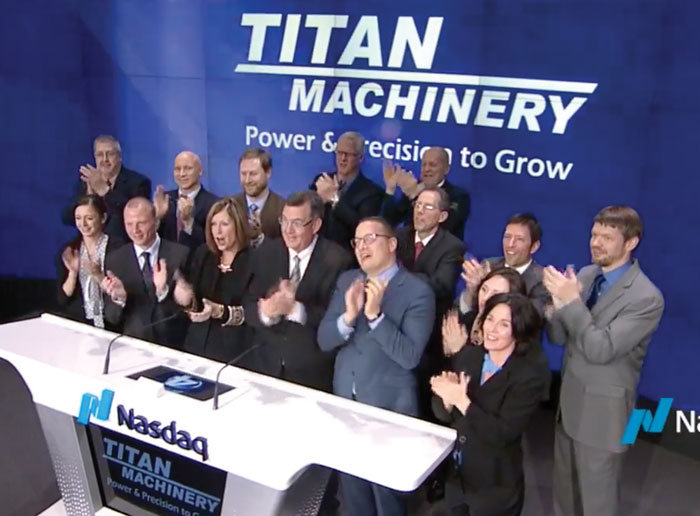
Dave Kanicki and Mike Lessiter ringing the NASDAQ Bell with Titan Machinery on Times Square. Photo by Nasdaq
The DOY exposed us to so many great leaders, and for me as a small business owner, it felt like free consulting. I’ve continued to get novel ideas dropped in my toolkit — for free — from those experiences.
One example is our successful “Depth Chart concept” at Lessiter Media that identifies potential candidates for a post before the time of need. It came out of the DOY interview at Arizona-based Stotz Equipment with CEO Tom Rosztoczy.
He and others have been receptive to my phone calls on how to address problems at our company, too. One of Rosztoczy’s repeated lines is “Perhaps you’re not communicating in the right manner to get the results that you want.” It’s that simple, isn’t it?
Throughout the video conference with Kanicki and Schmidt (each of us have covered different markets) we agreed that the program took on a much bigger life of its own in part because of the unique willingness of the industry to help. They’ve invested in us to help us produce better content for them.
Annual Outlook & Trends
Another major defining area for the company was setting up the annual Outlook & Trends survey and report. AEM was doing a forecast at the time based on manufacturers’ views, but no one was actively polling the dealer with the boots on the ground for ordering and knowing farmers’ purchasing plans.
“We wanted to do something with weight, detail and credibility,” recalls Kanicki. “In the late summer of 2005, we took on a big project to survey dealerships about their specific product-by-product expectations for 2006.”
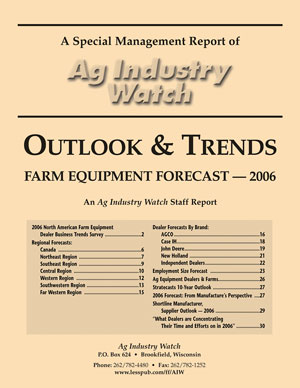
The completed surveys overwhelmed our fax machine. It showed dealers cared and were willing to actively participate to get a tabulated version for themselves.
“We prepared a comprehensive 48-page report to offer through Ag Industry Watch (now Ag Equipment Intelligence) and summarized those findings for an in-depth report in Farm Equipment. Looking back, we did a lot of unique things in a short time — it was really just Mike and me, and half of the time he gave to Farm Equipment was in sales. We were very busy, and thank heaven I was younger then. We just kept moving forward, put our heads down and didn't concern ourselves with what kind of energy it was going to take to get it done.
“The data we collected and published opened up a whole new audience for us. There were the financial analysts who followed the manufacturers, and then Deere, Case IH and AGCO also became interested. Who is better than the dealers when it comes to knowing what’s going on and what will happen in their AOR? That angle was very unique, set us apart from other forecasts and gave us a lot of credibility with the financial industry.
“And we got better each year. The DOY, the Dealership Minds special edition, the Forecast & Trends — these were all unique things that Farm Equipment that led to us becoming the No. 1 publication in the equipment segment. And we were changing the focus on what would be Ag Equipment Intelligence at the same time,” Kanicki says.
One thing that was clear from those days was how tight resources prioritize all efforts. When you don't have a lot of staff or time, it removes what can be wasteful or long-winded discussions on which way to go. We had a vision and concentrated on executing on it. And we were probably more productive as a 2-man operation than we might've been years later when we had more bodies on it.
I once asked Meyer at Titan about the keys to growth, and he imparted simplistic nuggets that I’ve never forgotten. “Growth,” he says, “is about biting off more than you can chew but getting the team to get it all chewed regardless. Then, you can confidently staff up for the growth you’ve already seen.” The second was his simple view of management and accountability. “Management is all about following up,” he says, and I’ve seen first-hand how he does, including emails and texts sent while most CEOs are still in bed.
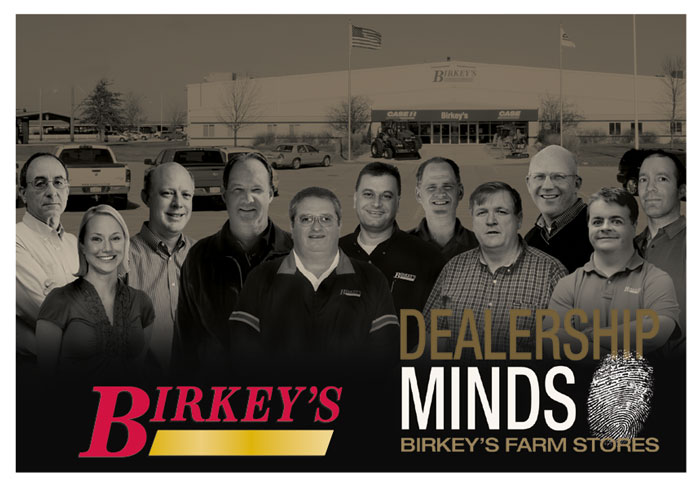
Dealership Minds Special Editions
Company Founder Frank Lessiter brought a novel new idea to Farm Equipment editorial planning meetings in 2009 and 2010 that he’d seen successfully executed in the equine field. Lessiter’s aggressive idea called for the Lessiter Publications staff writers, photographers and videographers to invade a dealership to do a thorough “deep dive” into how all the different cogs in a dealership machine work together. The first iteration involved a 2-day trip to Birkey’s Farm Store in Bloomington, Ill., in the fall of 2010.
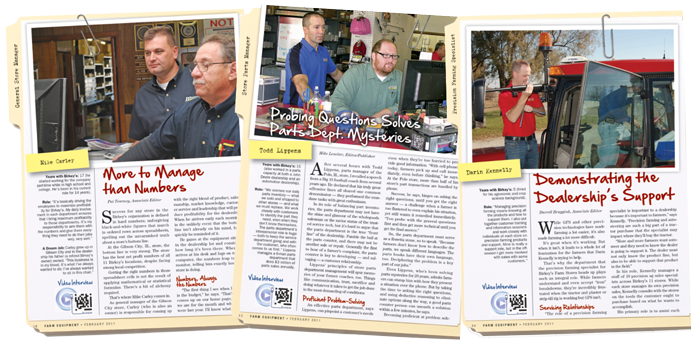
The interviewing needs required the recruitment of help well beyond the tiny Farm Equipment staff. Several Lessiter Publications staffers from other divisions participated in their first dealership-writing assignment that day, and the fresh eyes brought a unique perspective. Their work appeared in an 33-page special report on Birkey’s in February 2011.
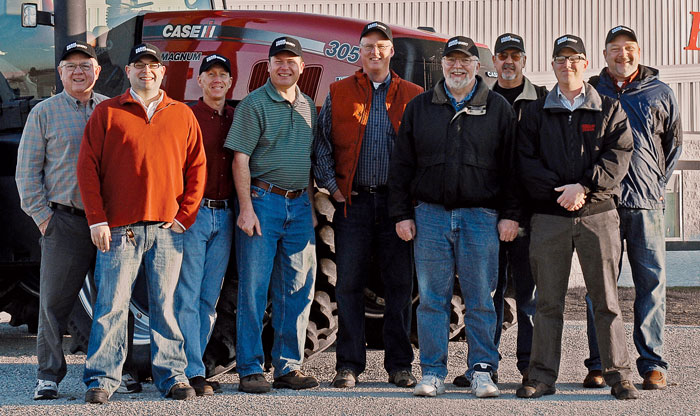
The special edition was dubbed “Dealership Minds” as a nod to Criminal Minds, a crime and profiling drama that ran for 15 years on CBS. Farm Equipment’s trademarked coverage always included a gatefold cover that showed the faces of the subjects.
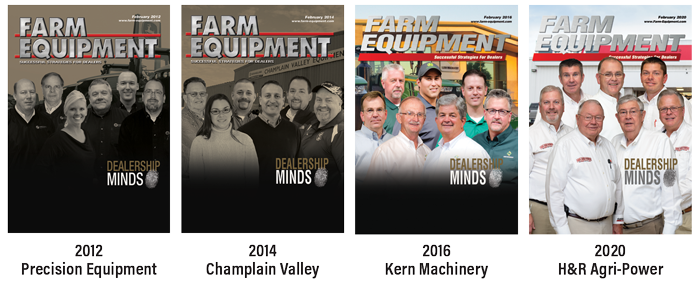
Our readership told us that our coverage brought a sense of discovery and “finally understanding” what a co-worker they've known for years actually does every day. The format has been repeated 4 more times since, with Precision Equipment (John Deere, Iowa), Champlain Valley Equipment (New Holland and Kubota, Vermont), Kern Machinery (John Deere, California) and H&R Agri-Power (Case IH, Kentucky).
When the magazine put its toe into the conference business in 2013, the brand was extended to use the already-accepted moniker, and the debut conference in Kansas City was called the “Dealership Minds Summit.”
Click here to access the 5 Dealership Minds Special Editions.Read Farm Equipment's 55 Years of History Coverage
Click here for the Farm Equipment History Video seriesClick here to read the "Looking Back" blog series

